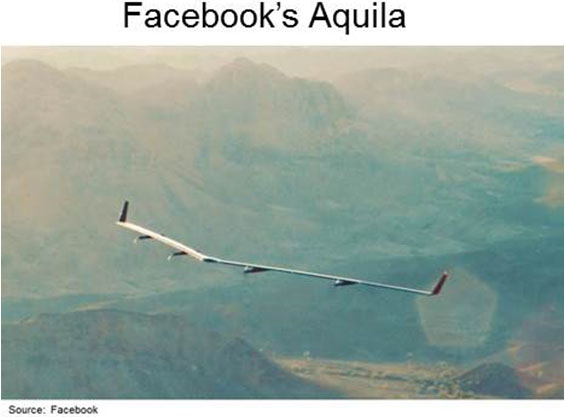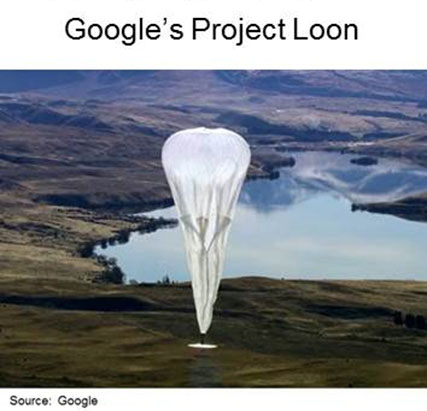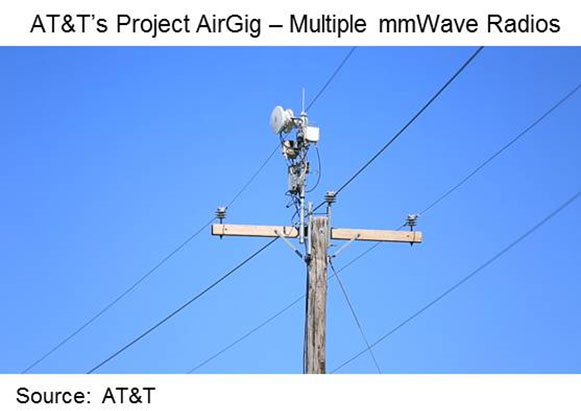Most of us enjoy our broadband connectivity through traditional methods of fixed (DSL, cable, fiber) or wireless (3G/4G, satellite, FWA). However, there remains a significant portion of the world’s population where those methods of connectivity are either impractical or simply too expensive to pursue.
According to the latest ITU estimates, there will be 3.5 billion people online by the end of 2016, but more than half the world’s population (some 3.9 billion people) will still be offline, and unable to connect regularly, if at all. Furthermore, in the 48 UN-designated least developed countries, the situation is far more concerning with only one in seven people expected to be online at the end of 2016.
In order to meet the United Nations’ sustainable development goals – both affordable and universal access to ICTs and broadband connectivity must be achieved. Universal connectivity provides a powerful platform to deliver essential services like e-governance, education, health, energy and financial inclusion and to ensure that no-one is left behind.
The ITU Connect 2020 targets call for 60% of the world’s population to be online by 2020. This will require bringing another 1.2-1.5 billion people online between now and then.
Meet the Innovators
I’ve highlighted a few of the innovations occurring across the industry in pursuit of ubiquitous connectivity.
In 2014, Facebook announced its Connectivity Lab with the goal of new technologies and platforms for connectivity on the ground, in the air and in orbit. To date, these have included laser communications, satellites and terrestrial wireless systems to provide connectivity to communities with different population densities, as well as Aquila, a solar-powered high-altitude, long-endurance aircraft that can stay aloft for months.
In June 2016, Facebook announced the first full-scale test flight of Aquila. The plane with a wingspan bigger than a Boeing 737 has wings made from a cured carbon fiber that is stronger than steel, but weighs about 1/3 of an electric car. Aquila flies on solar power during the day and battery power at night, with about half of the mass devoted to batteries. At 60,000 feet, Aquila’s efficient aerodynamics allows it to loiter using the power of three hairdryers (5,000 watts).

Aquila is capable of beaming an internet signal to people within a 60-mile communications diameter for up to 90 days at a time using free space laser communications as a mechanism for communicating between aircraft in the fleet, and e-band technology to beam connectivity from the airplane to receivers on the ground.
Other projects include Terragraph, using millimeter wave technology, which I wrote about here, as well as Project ARIES. The focus of Project ARIES (Antenna Radio Integration for Efficiency in Spectrum) is to provide higher throughput in the smallest bandwidths and improve energy efficiency by allowing for extended coverage ranges. To illustrate this, Facebook has built a base station with 96 antennas that can support 24 streams simultaneously over the same radio spectrum. By using the concept of “spatial multiplexing,” the antenna array at the base station can serve a variety of autonomous user terminals on the same time-frequency resource. This spatial resource sharing policy serves as an alternative not only to the need for spectrum licensing, but also the procurement of additional base stations in conventional cell-shrinking strategies. Through Project ARIES, Facebook has demonstrated 10x spectral and energy efficiency gains of 4G cellular with massive MIMO technology in point-to-multipoint deployments.
Google has been working on an ambitious project to extend internet connectivity to people in rural and remote areas of the world called Project Loon.
Project Loon is a global network of super-pressured, solar powered high-altitude balloons that act as floating cell towers, allowing local telecommunications companies to extend their coverage into areas that are currently unserved.

Each balloon is equipped with two main radio transceivers: a broad-coverage LTE base station (or “eNodeB”), and a high-speed directional link used to connect between balloons and back down to the internet. Each balloon can provide coverage to a ground area about 80 km in diameter, serving thousands of subscribers providing 4G/LTE-like speeds.
AT&T
AT&T recently announced its AirGig project, which provides connectivity to base stations and distributed antennas using millimeter wavelength surface-wave communications. The system uses high-bandwidth 30GHz-300GHz communications and existing power line infrastructure combined with low-cost plastic antennas and devices located along the power line to regenerate millimeter wave (mmWave) signals that can be used for 4G LTE and 5G multi-gigabit mobile and fixed deployments.

There are a number of use cases for this technology, including using surface-wave communications for small cell deployment and/or as a backhaul connection for small cells. Another is installing base station nodes and/or antennas on utility poles and the network connection can be provided by transmitters that send millimeter-wave surface-wave transmissions via the power lines between nodes. At the utility pole, a coupling device receives the surface-wave and can amplify it and send it forward on the power lines. Furthermore, when there are two or more wires, the solution can take advantage of diversity paths – using one insulated wire and one uninsulated wire.
For AT&T, Project AirGig eliminates the need for physical cables, greatly reducing both the time to market and the cost of providing services.
Trials are expected in 2017.
The Challenges of Broadband Innovation
While all of these innovations fall into the “cool technology” category, in order for any of them to be successful, they will need to be an economically viable alternative to current network infrastructures and technologies. Nonetheless, all of the above examples and the growing popularity of mmWave technology could potentially dramatically change the economics of deploying broadband infrastructure – making the broadband-for-all dream a reality.
